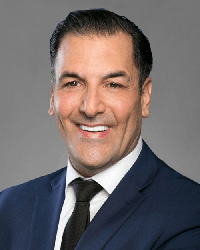News:
Owners Developers & Managers
Posted: May 9, 2008
It's that time of year again: Emergency planning for hurricane season
How often do we hear, or even say those words. No, it's not income tax time; no, it's not holiday shopping season; it may be someone's birthday, anniversary or impending graduation, but that's not what I'm referring to at this time.
What I am reminding you about is that it soon will be hurricane season. Already? How about, around the corner. It has also been said that "time flies when you're having fun." We just turned the corner on springtime, the weather is getting nicer and now someone comes along and reminds us that in only a short time away, it will be hurricane season.
According to a forecast by William Gray's team at Colorado State University, it is predicted that 15 named storms will be generated in the Atlantic in 2008. And, there's a better than an average chance that one or more major hurricanes will hit the U.S. mainland. Gray who has been issuing hurricane predictions for more than 20 years predicts that rising water temperatures in the Atlantic will bring a "well above average" storm season this year including four major storms.
In 2007 there were 15 named storms in the Atlantic, two were major storms and six of which became hurricanes. Last year, before the June-November season, U.S. government scientists had predicted 13 to 17 named storms and six hurricanes, three to five of which being major. What does all of this mean and what am I trying to tell you? If you have read my articles over the past 12 years, you will see a common thread of advice. My general message has always been under the banner of preparedness.
While major hurricanes mostly hit the Gulf Coast or the Southeastern United States causing great devastation and tragedy, several hurricanes that have hit the mainland at Louisiana or Mississippi have turned eastward toward Maryland and traveled north to New York and New England. Those hurricanes that hug the East Coast have caused damage in at least ten coastal states including New York, New Jersey and Connecticut.
When the warnings come, as they did with Katrina, that we will never forget, who was paying attention, besides the weather people? Katrina hit the area at 175 miles an hour. No power on earth could have prevented Katrina. The monumental loss of property could not have been avoided once the levees were breached. But with planning, which includes forethought and wisdom, the effects of the devastation, perhaps could have been lessened. The essence of emergency preparedness, disaster management or business continuity is proper planning, a continuous review of your procedures, and periodic training and drilling.
The U.S Geological Survey and the National Hurricane Center predict that a category 5 hurricane, three of which hit the U.S. mainland, may hit the Northeast, with winds greater than 155 mph and storm surges generally greater than 18 ft. above normal
The statistics about unacceptable down time and how many businesses do not survive are compelling. The basics for survival of any corporation or institution, its people, properties and assets are defined as being prepared for any contingency. Whether you have facilities in urban areas or suburban areas, you are not immune to the potential risks and vulnerabilities that exist in the form of any natural disaster. My loyal reader base will be familiar with the following philosophy: the simple exercise in crisis preparedness planning is not to ask, "What do we do now?" That question, should be asked at the development stages of emergency planning through well written procedures and check lists. You may contact Safeguards International, Inc. for complete business continuity planning, risk and vulnerability analysis and the preparation of "customized" emergency plans necessary to assure the safety of lives, the continuity of your business and the minimization of risk in times of need.
Allan Schwartz, CPP, CHS-III is president and CEO of Safeguards International, Inc., Yonkers, N.Y.
MORE FROM Owners Developers & Managers
Related Cos. and Sterling Equities open housing lottery for Willets Point Commons
Queens, NY Queens Development Group (QDG) – a joint venture between Related Companies and Sterling Equities – in partnership with the New York City Department of Housing Preservation & Development

Columns and Thought Leadership

The CRE content gap: Why owners and brokers need better digital narratives in 2026 - by Kimberly Zar Bloorian
As we head into 2026, one thing is clear: deals aren’t won by who has the best asset; they’re won by who presents it best. Yet many owners, operators, and brokers are entering the new year with outdated photos, inconsistent branding, and limited digital presence. This

Strategies for turning around COVID-distressed properties - by Carmelo Milio
Due to the ongoing pandemic, many landlords are faced with an increasing number of distressed properties. The dramatic increase in unemployment and reduction in income for so many has led to a mass exodus out of Manhattan, an increase in the number of empty rental units






.gif)

.gif)
.jpg)
.gif)